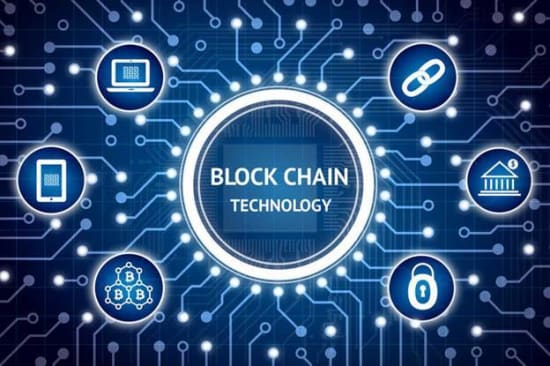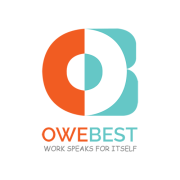
What is blockchain? You've come across the phrase on the internet a few times, and you kind of know that it has something to do with bitcoin. It is frequently used in conjunction with the newest buzzwords, including AI, machine learning, and IoT. But you most likely aren't yet aware of its precise meaning.
Satoshi Nakamoto first proposed the idea of blockchain development in the year 2008. In essence, it is a secure database design that stores transaction-related data. Confusing? Let's use an illustration as guidance.
A blockchain functions similarly to a public ledger in that it maintains a record of all transactions made through it. For instance, Bitcoin is a cryptocurrency—a brand-new type of money that only exists online and is based on the blockchain. When you send or receive bitcoins, the blockchain's blocks contain all of the transaction's data, including the timestamp, summary, amount transferred, and other details.
All transactions on the blockchain are anonymous and recorded, which is one of its features. The details of the transactions do not directly permit the identification of individuals. The openness of this method is increased by making all transactions publicly visible and observable.
How to set up a blockchain?
The decentralized nature of blockchain is a crucial concept to comprehend. This indicates that no single entity, group, or server is in charge of the entire blockchain. Users like you are in charge of maintaining the blockchain since you volunteered to take part in its creation. They are referred to as miners. In a moment, we'll talk about miners.
If you're a blockchain developer, you'll be familiar with the term "reverse a linked list," but if not, picture it as a page in a book linked to the previous book using threads. Each block will be connected to the previous block in the same way. The blockchain's chain-like structure is made possible by this link.
We discussed miners; now let's look at what they actually do. The blockchain is constructed and maintained with the assistance of miners. It is up to users like you and me to decide to be the governing entity, as there is no single entity in charge of overseeing the blockchain. If we choose to add to the blockchain, we will be referred to as miners.
A blockchain is essentially a sequence of blocks. What is a block, then? A block can be thought of as a page in your ledger or accounting books; it is a discrete entity made up of records of transactions. There are multiple blocks connected to one another on a blockchain.
How can a miner assist?
The blockchain is maintained with the help of miners. The processing power of their computers is one of these resources. These computers are referred to as nodes, and peer-to-peer connections are the means through which they communicate with other nodes of the same kind. Since these nodes are dispersed throughout the world, the blockchain will continue to function even if one node fails, for instance, because of a power outage in its area or for any other reason, thanks to the P2P (short for peer-to-peer) network's operating nodes.
Each node uses an algorithm to verify each new transaction after it has been added. The transaction is included in the blocks once it has been verified by the vast majority of nodes.
As a result, the miners contribute to the sustainability of the blockchain. The foundation of blockchain mining is the verification of a transaction. The miner is only compensated in bitcoins when they have successfully confirmed a transaction. It doesn't seem alluring, does it? Of course, you need to offer incentives to people in order to keep them motivated to take on the enormous burden of maintaining the blockchain.
One other benefit of a blockchain: Once a transaction has been added to the blockchain, it cannot be changed or removed. It remains in the blockchain indefinitely after it is added. This is a way to guarantee security and transparency, as well as guard against fraud.
Each block is protected using hashing, a method that converts a key into an illegible value. The data kept in the blocks are transformed into this value and kept there. If you have the information, you can find the value, but you cannot go backward. In other words, if you have certain hashed values on hand, there is no practical procedure to recover the original information from those values. This is what makes blockchain more secure.
Even though the majority of large corporations and businesses do not recognize bitcoin as a legal form of payment, primarily due to a lack of confidence in this novel system and the unwillingness of governing bodies to approve or issue regulations, there are many small to medium-sized businesses and startups that are keen to understand and leverage these most recent technological trends and who have begun accepting bitcoins as a form of payment in order to attract the young and tech-savvy.
However, major corporations are starting to show interest in the blockchain concept. They may not be interested in bitcoins, but they are eager to create applications that use the blockchain's decentralized system concept.
Every headline in news publications these days foreshadows "The bitcoin bubble and its impending crash." You've also heard from Bitcoin's critics, who are merely eagerly anticipating the currency's demise.
But how precisely will it collide?
The 51% attack, which contends that if there are more dishonest individuals in the blockchain, our secure decentralized wall would collapse, is what most of these news items are referring to.
As we've seen, the majority (>50%) of the nodes must agree for a transaction to be put on the blockchain.
However, if the majority is somehow infiltrated, or in other words, taken over by hackers, they can tamper with the way transactions are confirmed and destroy the trustworthy and secure blockchain system.
The independence of the blockchain makes it challenging for new users to secure their assets on the blockchain. Therefore, despite bitcoin's stellar success, the majority of newcomers are hesitant to invest.
So, the majority of what you need to know about blockchain is covered by this. I hope this post has given you a general understanding of blockchain and the role that bitcoins play in the overall system.


